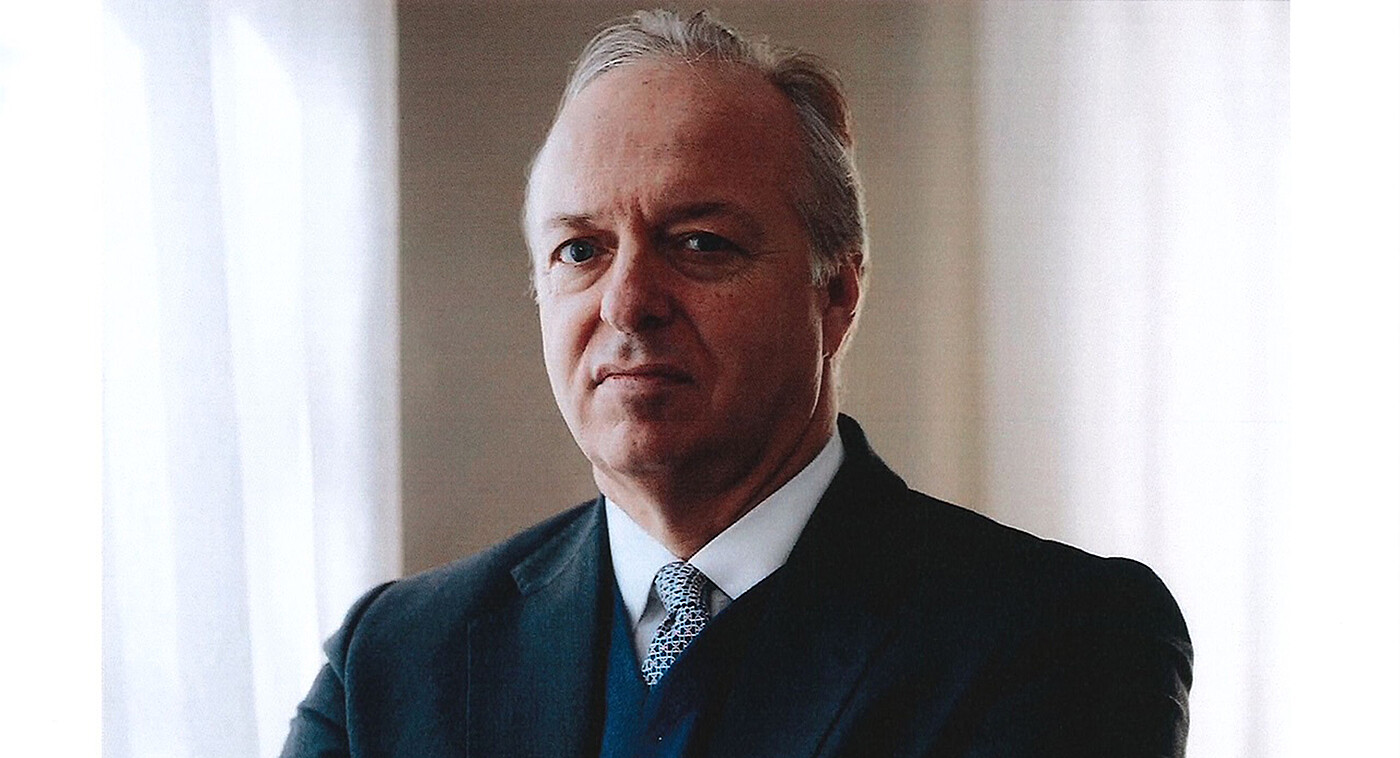The German economy, usually extremely successful, has experienced many crises in the past – and always recovered very quickly. What is different this time and what is the mood among business leaders in your experience?
In recent years we have faced a plethora of challenges, from the effects of the Covid pandemic and the energy crisis to geopolitical tensions. We are currently still experiencing the aftermaths of these crises. New conflicts and problems, at home and abroad, have made the situation worse. In addition to these current challenges we must continue to work on existing tasks such as digitalisation, the ongoing skills shortage, inflation and the transition to e-mobility. These topics have been on the agenda for quite some time and the pursuit of climate targets adds to the pressure to achieve results. In an overall context, these challenges have led to a particularly complex situation that companies in nearly all sectors of the German industry must face up to and overcome by finding the right solutions. This large number of challenges that occur, in the opinion of many observers, ad hoc and at great speed, are too much to handle for some companies.
Therefore, it also comes as no surprise that company managers are becoming increasingly cautious. Many of them use short-term planning once again to steer their businesses and – rightly – closely watch liquidity. The companies are faced with the difficult task of making the right decisions in an environment that is becoming more and more defined by uncertainties and limited resources. As a consequence, we see more reluctance to invest, in particular in new development and innovations. However, it seems highly questionable at times whether these sometimes short-term responses to current developments will also give the companies the long-term stability and resilience they need in a changing and volatile environment.
What do you think are the success factors for achieving a sustainable turnaround or successful transformation?
A sustainable turnaround or successful transformation require leveraging interdisciplinary legal and business-management skills. The start is always an in-depth analysis of the changes that are needed to maintain or regain competitiveness.
In this context, comprehensive and transparent communications with all stakeholders are essential, in order to involve them at an early stage and weigh up different options for action in the area of restructuring, reorganisation or insolvency. Good communications build trust and acceptance for (necessary) measures and ultimately contribute to their success.
From a legal point of view, it is just as important to comply with obligations under insolvency law and consider liability risks for the management of the company. Rolling and documented liquidity planning for continuous monitoring of liquidity in compliance with insolvency law, supported by legal advisors, helps to avoid liability risks in relation to the obligation to file for insolvency, and, above all, to maintain room to manoeuvre and carefully weigh up, coordinate and then stringently implement possible alternatives.
From a business management perspective, it is advisable in crisis situations to make decisions in line with the tried and tested shareholder wisdom of “limiting losses and allowing profits to continue”. At the same time, it is essential to invest capacities and financial resources to ensure long-term competitiveness, given that sufficient resources are available. This holistic approach combines legal compliance, transparent communications, liquidity management and business foresight to achieve a successful turnaround.
When you are called in, usually the requirements are complex and time is of the essence. In your view, what makes for good communications?
As I have already mentioned, it is vital for good communications in crisis situations to involve all stakeholders from an early stage in order to create a common understanding. Transparency plays a key role in this context, as it forms the basis for effective communications. Swiftly establishing this transparency in turn requires assessing the current situation in a timely manner as well as the skill to identify and implement some initial stabilising measures. This creates the necessary trust for the next steps.
It is important to always treat everyone as equals in the discussions, which should be conducted in a respectful and precise manner. Issues need to be addressed clearly and nothing should be glossed over so that options for actions can be discussed on a realistic basis and constructive solutions will be found. In addition, it is important to present clear timelines in order to structure the process and ensure efficient communications.
Communications specialists and legal experts might step on each others' toes from time to time since their perspectives are different. How can they benefit from one another?
In a structured collaboration, communications specialists and legal experts complement one another perfectly without getting in each others’ way. The approach of legal experts for overcoming corporate crises is different from the traditional way advice is given by lawyers. In those crisis situations, companies do not just need legal expertise, but also active crisis management support. The knowledge and implementation of legal reorganisation governance forms a solid basis for avoiding considerable liability risks for all parties involved. However, there is more to active crisis management than the day-to-day management of ongoing business operations. It requires advising management in this unfamiliar situation as well as taking on unfamiliar tasks. Well-coordinated communications between the two areas of expertise can bring about the win-win situation desired by all.
Do you also see positive aspects in crises? Can they become drivers for change?
Crises open up many perspectives, in particular when we recognise the opportunities and leverage the associated potentials. Frequently, previously unidentified weak points are only exposed during a crisis. In this context, crises become catalysts for dealing with these weak points and clear the path for positive change.
Ideally, crises serve as a driving force for fundamental changes in direction. They provide the opportunity to learn from past mistakes in order to avoid similar problems in the future. This does not only result in problems being solved in the short term, but also in the long-term optimisation of processes and strategies.
Even insolvency does not necessarily need to be the end of the line for the business. During insolvency proceedings there is an opportunity for reorganisation that can lead to a turnaround and a new start for the company. German insolvency law, in particular, provides a genuinely useful tool box that can be used to still turn things around. Numerous examples from all industries have shown this. It is important that no ideas are out of bounds and that we find the time to make decisions carefully and without haste, as I mentioned earlier.
With the German Corporate Stabilisation and Restructuring Act (StaRUG), the legislator has provided companies with a new option for restructuring their operations without the need to enter insolvency proceedings when insolvency looms. Are procedures of this type the future?
The StaRUG process provides another tool for restructuring companies. The option to restructure a company without having to seek permission from all creditors gives companies a degree of flexibility and prevents them from having to enter insolvency proceedings, which can be costly and time-consuming and even damage a company's reputation.
Despite these benefits, we must not think of StaRUG as a one-size-fits-all solution for all situations. Particularly in cases where operational measures such as the termination of contracts are to be achieved, StaRUG reaches its limits. In some instances it might not even be possible to consider it, if the crisis is already too far advanced.
In addition, some creditors or creditor groups feel insufficiently protected under this process, because they consider their possibilities to have their say during the early stages of the procedure to be limited. There is also an increasing number of concerns being voiced with regard to transparency and the protection of minority shareholders.
Furthermore, there is a risk of companies in financial difficulties remaining outside insolvency proceedings for too long, which could adversely affect the creditors. The lack of an option for change in top management and the lack of control by a supervisor or an insolvency administrator are further challenges that are often not accepted by the creditors.
In summary, it can be said that the effectiveness of StaRUG depends on the individual circumstances. It is important to point out that the StaRUG process is intended as an incentive but cannot be seen as the sole solution for all situations. However, it can be said without doubt that Germany as a location for restructuring has gained significantly since StaRUG with its additional instruments for reorganisation has been introduced. We know of several cases in which even the prospect of a solution being reached through the StaRUG process has led to opposing creditors being prepared to relent.
Christopher Seagon is a Managing Partner at the legal firm Wellensiek (www.wellensiek.de), whose 15 partners and 140 employees in eight offices in Germany specialise in company restructuring and insolvencies. For 28 years, he has been working as a restructuring consultant, been a member of advisory boards and acted as a trustee and insolvency administrator in more than 1,000 proceedings and mandates.
Photo: Christopher Seagon

 LinkedIn
LinkedIn
 Twitter / X
Twitter / X

